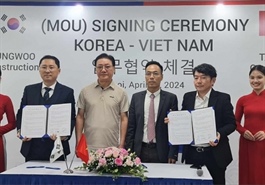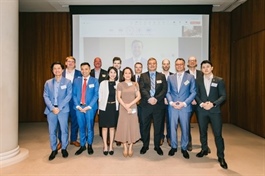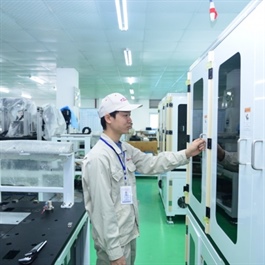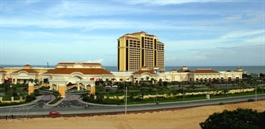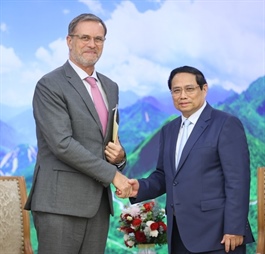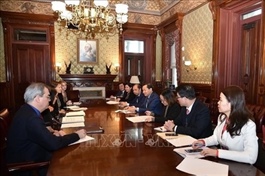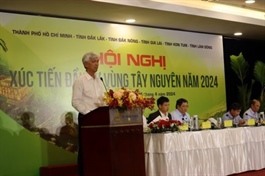Central province calls investment in industries and infrastructure
Central province calls investment in industries and infrastructure
More than US$280 million from 16 foreign direct investment (FDI) and nine domestic projects has been poured into the central province in the first quarter of 2024, promising a surge in industrial production and export by the end of this year.
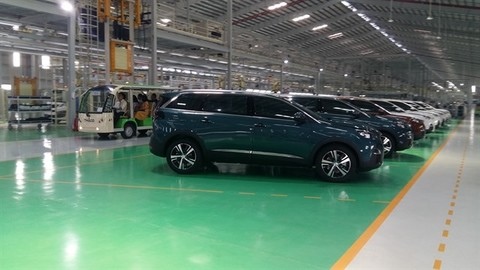
Peugeot cars undergo final checks at Trường Hải Automobile Factory in Quảng Nam Province. The central coastal province has drawn huge investment in industrial production and key infrastructure projects. — VNS Photo Công Thành |
A report from the provincial People’s Committee unveiled that seven FDI projects committed an investment of $124.4 million, while domestic businesses agreed to put VNĐ3.89 trillion ($155.76 million) in nine projects in the locality.
According to the local authorities, the positive investment attraction results in the first quarter would mostly benefit from the Master Plan 2021-30, with vision to 2050 that was officially announced in March.
It said the Master Plan aims at developing the province as a destination of international tourism, a national multi-sector high-tech industries focus, a biodiversity-based green growth power and a centrally-run locality.
Earlier, the province had agreed on proposals and surveys assessing investment possibility for 16 projects with an estimate fund of VNĐ20 trillion ($800 million).
Trường Hải Group, a key multi-industry investor in the province, alone proposed seven out of 16 projects with more than VNĐ5 trillion ($200 million) in building plants of mechanical electrical refrigeration, automobile glass, car bodies and spare parts, car seats and passenger car interiors, an industry R&D centre and upgrading the current Chu Lai Port.

Factories are built at Tam Thăng Industrial Park for processing and industrial production projects in Quảng Nam Province. — Photo courtesy of Quảng Nam Portal |
Thaco Group alone contributed VNĐ2.7 trillion ($108 million) to the provincial budget in the first quarter, accounting for 50 per cent of total provincial budget (VNĐ5.32 trillion, or $212.8 million) collected in the first three months.
Deputy Director of the provincial Department of Planning and Investment, Nguyễn Hưng said Quảng Nam has been boosting the construction of synchronised infrastructure projects and administration reform, clearing the way for investors.
“A series of solutions have been planned in creating the best conditions for businesses setting up their factories at available industrial parks with procedure supports. An overall design of developing industrial infrastructure projects in line with education, health care and living quarters for investors flocking to Quảng Nam,” Hưng said.
“The province has been speeding up investment promotion programmes with key domestic and international investors. We identified 50 out of 154 top priority investment sectors to lure huge investment as well.”
In the first quarter, the central coastal province also witnessed a surge of industrial manufacturing projects including Karcher Industrial Vacuuming GmbH, a recognised supplier of high-performance vacuum cleaners for diverse industrial requirements, from Germany; Star Group, producing high-quality and high-precision magnet products from Korea; Uc Thinh Việt Nam glass science development company, a Chinese-funded company; Arena technology (Soleseat) and Guoguang electric company from China; PMG plastic form and metal company from the US have registered total VNĐ4.23 trillion ($169.2 million) in surveys and proposal plans.
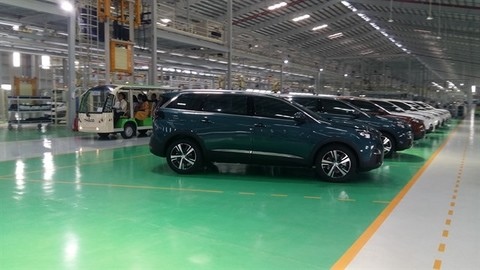
A truck passes a border check in Nam Giang district of Quảng Nam province. The site serves cross-border logistics from central Việt Nam to Laos and Thailand. — Photo courtesy of A Lăng Ngước |
To date, Quảng Nam has 200 validated FDI projects with total an accumulated $6.2 billion, and 1,145 domestic projects worth VNĐ229 trillion ($9.1 billion).
The province was assigned to contribute VNĐ23.6 trillion ($944 million) to the State budget in 2024.
Quảng Nam has been calling huge investment in the development of an international airport with top international aviation standards, and the deep-sea port system could handle cargo vessels of 50,000 DWT (dead-weight tonnes).




